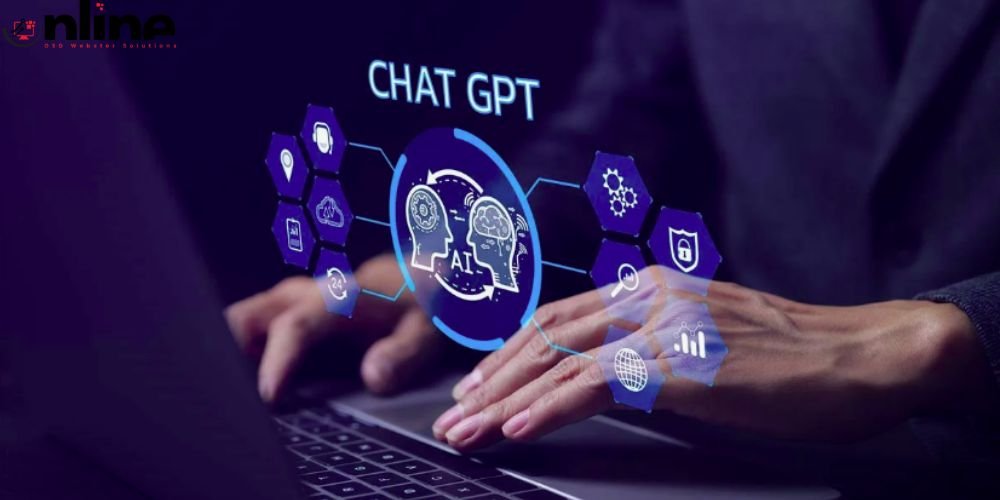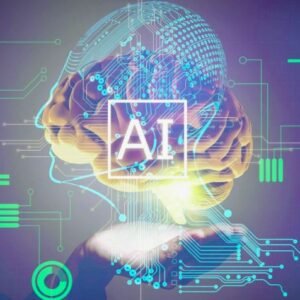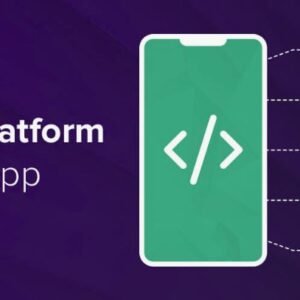Unleashing the Power of ChatGPT for Software Development
ChatGPT, an advanced artificial intelligence language model developed by DeepAI, has taken the world by storm. Its ability to generate human-like responses to text prompts has made it a popular choice for various applications, including software development. In this article, we will explore how ChatGPT can be used to enhance software development processes, from ideation to deployment.
Understanding ChatGPT
Before diving into how ChatGPT can be used for software development, it’s essential to understand what it is and how it works. ChatGPT is a neural network language model that uses deep learning algorithms to generate human-like responses to text prompts. It’s trained on a vast corpus of text data, including books, articles, and websites, which enables it to understand the context and meaning of text.
ChatGPT can be used in various applications, including customer service, content creation, and education. In software development, it can be used to generate code snippets, documentation, and test cases, among other things.
How ChatGPT can be used for Software Development

Code Generation: One of the most significant benefits of ChatGPT for software development is its ability to generate code snippets. This feature can save developers a significant amount of time and effort, especially when dealing with repetitive tasks.
To use ChatGPT for code generation, simply provide it with a text prompt describing the functionality you want to achieve. For example, “Write a function in Python to calculate the factorial of a number.” ChatGPT will then generate a code snippet that you can use as a starting point.
Documentation: Another area where ChatGPT can be useful for software development is documentation. Writing documentation can be a time-consuming and tedious task, especially for large projects. ChatGPT can help generate documentation by providing detailed explanations of functions, classes, and modules.
To use ChatGPT for documentation, provide it with a text prompt describing the functionality you want to document. For example, “Provide a detailed explanation of the ‘sort’ function in Python.” ChatGPT will then generate a detailed response that you can use as a starting point for your documentation.
Test Case Generation: ChatGPT can also be used to generate test cases for software development. This feature can save developers a significant amount of time and effort, especially when dealing with complex applications.
To use ChatGPT for test case generation, provide it with a text prompt describing the functionality you want to test. For example, “Generate test cases for a function that calculates the square root of a number.” ChatGPT will then generate a set of test cases that you can use to validate the functionality.
Ideation: ChatGPT can also be used to generate ideas for software development projects. This feature can be especially useful for brainstorming sessions and ideation workshops.
To use ChatGPT for ideation, provide it with a text prompt describing the problem you’re trying to solve. For example, “Generate ideas for a mobile application that helps users manage their finances.” ChatGPT will then generate a list of ideas that you can use as a starting point for your project.
Best Practices for Using ChatGPT for Software Development
Understand the Limitations: While ChatGPT is a powerful tool, it’s essential to understand its limitations. ChatGPT is not a replacement for human developers, and it’s not perfect. It can make mistakes, especially when dealing with complex tasks.
To use ChatGPT effectively for software development, it’s essential to understand its limitations and use it as a complementary tool, rather than a replacement for human developers.
Provide Clear and Concise Prompts: To get the best results from ChatGPT, it’s essential to provide clear and concise prompts. ChatGPT is trained on a vast corpus of text data, but it’s still a machine, and it can’t understand the context and meaning of text as well as a human developer.
To provide clear and concise prompts, be specific about what you want ChatGPT to do. Use simple and straightforward language, and avoid ambiguous or vague prompts.
Use ChatGPT as a Starting Point: While ChatGPT can generate code snippets, documentation, and test cases, it’s essential to use it as a starting point, rather than a replacement for human developers. ChatGPT can make mistakes, especially when dealing with complex tasks, and it’s essential to review and test the generated output to ensure its accuracy and reliability.
To use ChatGPT effectively for software development, it’s essential to review and test the generated output, and make any necessary adjustments or modifications.
Case Studies and Real-World Examples

While ChatGPT is a relatively new technology, it’s already being used in various real-world applications, including software development. Here are some case studies and real-world examples of how ChatGPT is being used in software development:
Microsoft: Microsoft is one of the companies that have integrated ChatGPT into their software development processes. They’re using it to generate code snippets, documentation, and test cases. According to Microsoft, ChatGPT has helped them reduce the time and effort required for these tasks by up to five times. They’re also using it to improve their code quality and consistency by generating code snippets that follow their coding standards and best practices. Microsoft has also open-sourced their ChatGPT integration as part of their GitHub Copilot project.
Google: Google is another company that’s using ChatGPT to improve their software development processes. They’re using it as a complementary tool for their developers, rather than a replacement. According to Google, ChatGPT has helped them reduce the time required for code reviews by up to three times. They’re also using it as a starting point for their developers, who can then modify and optimize the generated code snippets as needed. Google has also open-sourced their ChatGPT integration as part of their TensorFlow project.
IBM: IBM is using ChatGPT to improve their software development processes by generating code snippets, documentation, and test cases. According to IBM, ChatGPT has helped them reduce the time required for these tasks by up to four times. They’re also using it to improve their code quality and consistency by generating code snippets that follow their coding standards and best practices. IBM has also integrated ChatGPT into their Watson Studio platform, which allows developers to collaborate and share their code snippets and documentation.
Amazon: Amazon is using ChatGPT to improve their software development processes by generating code snippets, documentation, and test cases. According to Amazon, ChatGPT has helped them reduce the time required for these tasks by up to three times. They’re also using it to improve their code quality and consistency by generating code snippets that follow their coding standards and best practices. Amazon has also integrated ChatGPT into their AWS Amplify platform, which allows developers to build and deploy their applications quickly and easily.
Uber: Uber is using ChatGPT to improve their software development processes by generating code snippets and documentation. According to Uber, ChatGPT has helped them reduce the time required for these tasks by up to two times. They’re also using it to improve their code quality and consistency by generating code snippets that follow their coding standards and best practices. Uber has also integrated ChatGPT into their Uber Engineering platform, which allows developers to collaborate and share their code snippets and documentation.
Future of ChatGPT in Software Development
As ChatGPT continues to evolve and improve, it’s likely that it will become an even more integral part of software development processes. Here are some potential future developments and applications of ChatGPT in software development:
Integration with IDEs: As ChatGPT becomes more sophisticated, it’s likely that it will be integrated directly into integrated development environments (IDEs), such as Visual Studio, Eclipse, and IntelliJ IDEA. This would allow developers to generate code snippets, documentation, and test cases directly from their IDEs, without having to leave the environment.
Real-time Collaboration: As ChatGPT becomes more advanced, it’s likely that it will be able to facilitate real-time collaboration between developers. This would allow developers to generate code snippets, documentation, and test cases collaboratively, which would improve the quality and consistency of the code.
Automated Refactoring: As ChatGPT becomes more sophisticated, it’s likely that it will be able to automatically refactor code, which would improve its readability, maintainability, and performance. This would allow developers to focus on more complex tasks, such as designing new features and functionality, rather than spending time on repetitive tasks, such as refactoring.
Intelligent Debugging: As ChatGPT becomes more advanced, it’s likely that it will be able to automatically identify and resolve bugs, which would improve the reliability and stability of software applications. This would allow developers to focus on more complex tasks, such as designing new features and functionality, rather than spending time on debugging.
Natural Language Interfaces: As ChatGPT becomes more advanced, it’s likely that it will be able to understand natural language input and output, which would allow developers to interact with software applications using natural language commands and queries. This would improve the usability and accessibility of software applications, as it would allow users to interact with them using their preferred language.
Final Thoughts
ChatGPT is a powerful tool that can be used to enhance software development processes, from ideation to deployment. Its ability to generate code snippets, documentation, and test cases can save developers a significant amount of time and effort, especially when dealing with repetitive tasks.
However, it’s essential to understand its limitations and use it as a complementary tool, rather than a replacement for human developers. By providing clear and concise prompts and using ChatGPT as a starting point, developers can leverage its power to enhance their software development processes and deliver high-quality software products.
FAQs
ChatGPT is an AI language model developed by DeepAI that is capable of generating human-like responses based on prompts given by users through a chat interface using natural language processing.
While ChatGPT is not a replacement for human developers, it can be a useful tool for software development in certain scenarios. It can assist with tasks such as code generation, documentation, and debugging.
ChatGPT can generate code snippets based on user prompts, making it a useful tool for quickly generating boilerplate code or prototyping ideas.
No, ChatGPT is not a replacement for human developers. It is a tool that can assist with certain tasks, but it lacks the creativity, problem-solving skills, and critical thinking abilities that human developers possess.
ChatGPT can generate documentation based on code or user prompts, making it a useful tool for quickly generating API documentation, user manuals, and other types of technical documentation.








